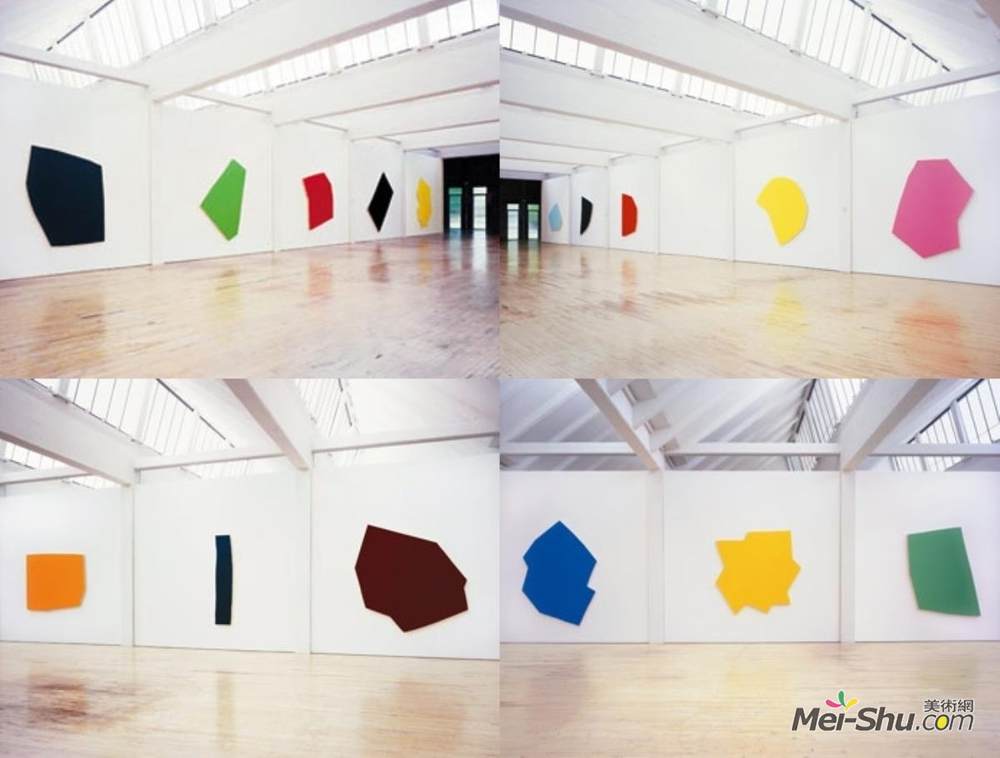 科诺贝尔(Imi Knoebel)高清作品《24种颜色(用于眨眼)》
科诺贝尔(Imi Knoebel)高清作品《24种颜色(用于眨眼)》
作品名:24种颜色(用于眨眼)
原名:闪亮的颜色为24
艺术家:科诺贝尔
年代:1977
风格:色域绘画,极简主义
类型:抽象
法本-弗尔·布林基(24种颜色-布林基)于1977年被处决,就在伊米·诺贝尔的挚友、德国画家布林基·巴勒莫过早去世后不久。对于Knoebel来说,这一刻证明是重要的。个人损失是以艺术遗产的形式经历的:一个以他作为一个着色家的礼物而闻名的同行的遗赠。然而,直到那一刻,与他的朋友相反,Knoebel严格地将他的调色板限制在白色和黑色的单色区域,或者更经常地,如Raum 19(房间19),1968年所见,依赖于马森特温暖的自然色调。的确,Knoebel对Masonite董事会的迷恋意味着,在他职业生涯的第一个十年,他经常被认为是雕塑家而不是画家。拉姆19像当时所有的作品一样,是以唯物主义的观点构思的。雕塑和绘画的基本原理包括其形式语言:平面表面、要存储或堆叠的支架和担架、体积固体和塑性几何元素。显而易见,那些与绘画的绘画方面更常见的特征——虚幻的空间和横跨平坦场地的有色形状的配置——是缺失的。
Title:24 Colors (for Blinky)
Original Title:24 Farben-für Blinky
artist:Imi Knoebel
Date:1977
Style:Color Field Painting,Minimalism
Genre:abstract
24 Farben-für Blinky (24 Colors—for Blinky) was executed in 1977, shortly after the untimely death of Imi Knoebel's close friend, the German painter Blinky Palermo. For Knoebel, this moment proved significant. Personal loss was experienced in the form of artistic legacy: a bequest from a peer renowned for his gifts as a colorist. Yet, up to that moment, Knoebel had, in contrast to his friend, strictly confined his palette to white and black monochrome fields or, more often, as seen in Raum 19 (Room 19), 1968, depended on the warm natural hues of Masonite. Indeed, Knoebel's fascination with Masonite board had meant that for the first decade of his career, he was more often considered a sculptor than a painter proper. Raum 19 was, like all his works at that time, conceived in materialist terms. The fundamentals of both sculpture and painting comprise its formal language: planar surfaces, supports and stretchers to be stored or stacked, volumetric solids and plastic geometric elements. Tellingly, those features more commonly associated with the pictorial aspects of painting-illusionistic space and the disposition of colored shapes across a flat field-are absent.
作品名称:《24种颜色(用于眨眼)》科诺贝尔(Imi Knoebel)高清作品欣赏
作品链接:https://www.mei-shu.com/famous/25205/artistic-144309.html
作品类别:油画
免责声明:本站部分公开资料来源于互联网,目的是用于学术交流与讨论,并不代表本网赞同其观点和对其真实性负责。如果您认为我们的侵犯了您的权益,请与我们联系(banquan#mei-shu.com #替换为@),我们将在第一时间删除相关内容。